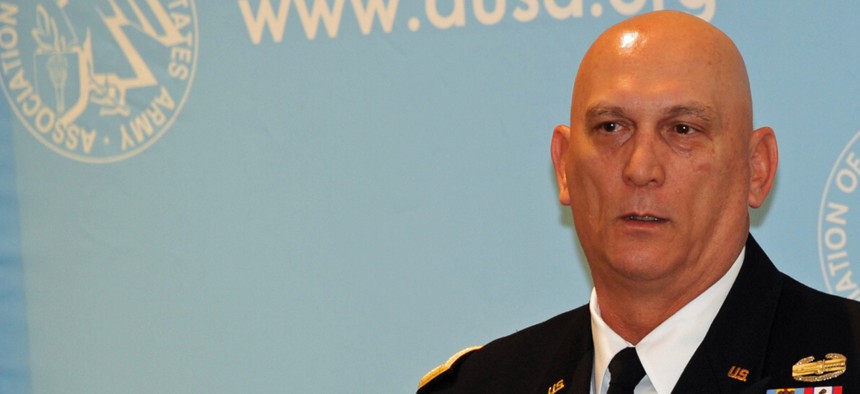
Army Chief of Staff Gen. Ray Odierno speaking at a breakfast hosted by AUSA U.S. Army
The Army Wants More Smartphones on the Battlefield
Army Chief of Staff Gen. Ray Odierno says the Army shouldn't have to rely on heavy, bulky communications equipment. By Bob Brewin
Battlefield communications gear is unsustainably cumbersome compared to commercial cellphone technology, according to Army Chief of Staff Gen. Ray Odierno.
“I can sit here in my chair and pull out my smartphone and talk to every continent in the world with one little smartphone," Odierno said at a breakfast meeting of the Association of the U.S. Army last Thursday. When it comes to battlefield communications, he said, “I have to bring 50 trucks and 300 soldiers. Why is that? We cannot do that anymore. Our command and control systems are too heavy today.”
The Army has focused on battlefield command and control systems as a key component of its modernization strategy in field tests the past three years. Last November during the semi-annual Network Integration Evaluation exercise at Ft. Bliss Texas, the headquarters component of 2nd Brigade, 1st Armored Division (2/1 AD) required three trucks just to house its networks, with communications throughout the brigade handled by a total of 655 tactical radios.
The challenge for the Army, Odierno said, is “to determine how we leverage the technologies that are out there. How do we leverage our ability to reduce our footprint to have better communications to secure data?”
(Read more Defense One coverage of the Army here)
This includes the ability to communicate from military transport aircraft while en route from the United States to a forward location. “We are working on making sure that as you are in a C-17 flying from Fort Bragg, N.C., to wherever, that C-17 should have complete visibility of the operations you are going to conduct wherever you are in the world, “ Odierno said.
The Army, he said has to “be able to deploy very quickly, get there in small packages and then potentially build on them, and we have to get there with the least amount of support necessary," he said. "We have to be able to go to remote areas anywhere in the world while building on our advantage of tactical operations’ strategic ability."
To meet the demands of future missions following the end of the war in Iraq and the final withdrawal of Army troops from Afghanistan, Odierno said the Army needs to invest in “leap ahead” technology, but do so wisely.
“What are innovative ways for us to provide logistics and reduce our tail? 3-D printing?," he asked rhetorically. “I don't know what that means yet. I understand 3-D printing, but I don't know what it means to our organizations. I don't know how we take that and utilize that in order to reduce our footprint for the future.” Odierno said.




